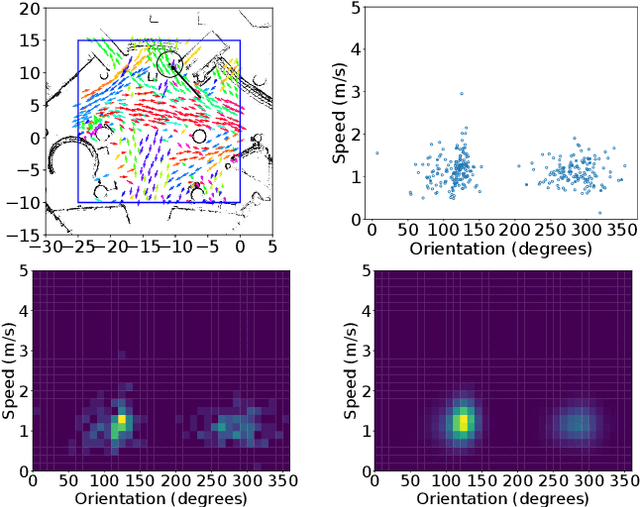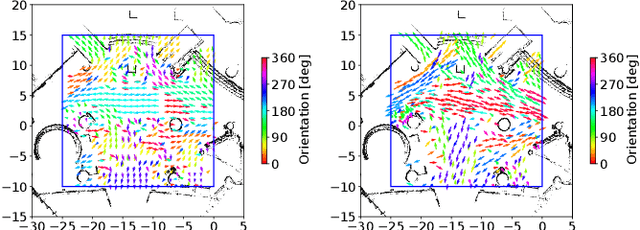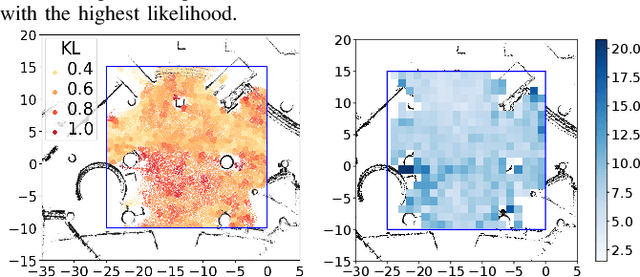Han Fan
LaCE-LHMP: Airflow Modelling-Inspired Long-Term Human Motion Prediction By Enhancing Laminar Characteristics in Human Flow
Mar 20, 2024



Abstract:Long-term human motion prediction (LHMP) is essential for safely operating autonomous robots and vehicles in populated environments. It is fundamental for various applications, including motion planning, tracking, human-robot interaction and safety monitoring. However, accurate prediction of human trajectories is challenging due to complex factors, including, for example, social norms and environmental conditions. The influence of such factors can be captured through Maps of Dynamics (MoDs), which encode spatial motion patterns learned from (possibly scattered and partial) past observations of motion in the environment and which can be used for data-efficient, interpretable motion prediction (MoD-LHMP). To address the limitations of prior work, especially regarding accuracy and sensitivity to anomalies in long-term prediction, we propose the Laminar Component Enhanced LHMP approach (LaCE-LHMP). Our approach is inspired by data-driven airflow modelling, which estimates laminar and turbulent flow components and uses predominantly the laminar components to make flow predictions. Based on the hypothesis that human trajectory patterns also manifest laminar flow (that represents predictable motion) and turbulent flow components (that reflect more unpredictable and arbitrary motion), LaCE-LHMP extracts the laminar patterns in human dynamics and uses them for human motion prediction. We demonstrate the superior prediction performance of LaCE-LHMP through benchmark comparisons with state-of-the-art LHMP methods, offering an unconventional perspective and a more intuitive understanding of human movement patterns.
 Add to Chrome
Add to Chrome Add to Firefox
Add to Firefox Add to Edge
Add to Edge